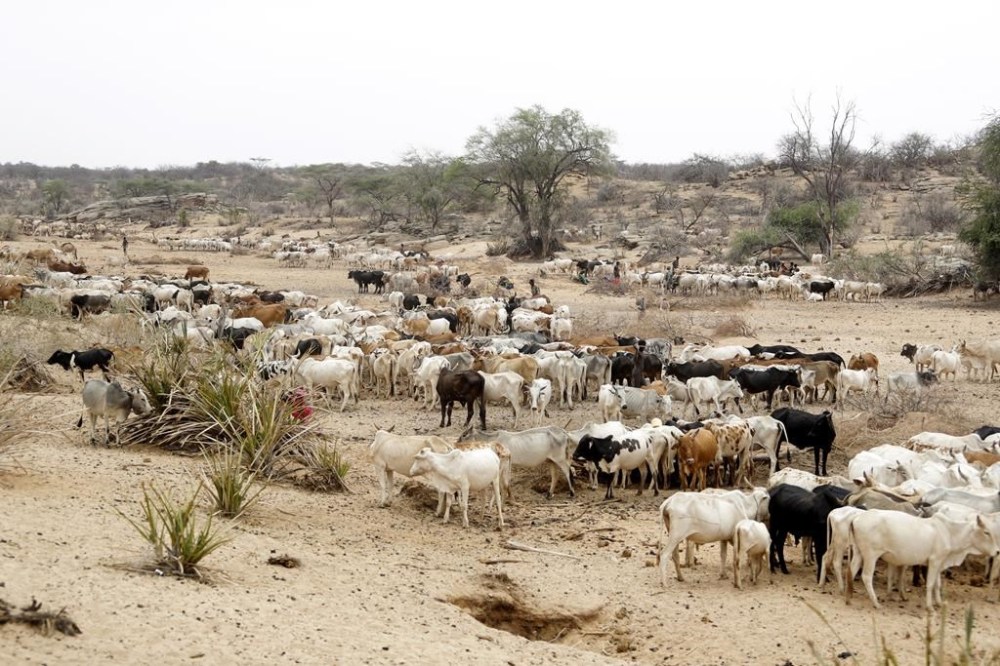5 countries in East and southern Africa have anthrax outbreaks, WHO says, with 20 deaths reported
Advertisement
Read this article for free:
or
Already have an account? Log in here »
To continue reading, please subscribe:
Monthly Digital Subscription
$0 for the first 4 weeks*
- Enjoy unlimited reading on winnipegfreepress.com
- Read the E-Edition, our digital replica newspaper
- Access News Break, our award-winning app
- Play interactive puzzles
*No charge for 4 weeks then price increases to the regular rate of $19.00 plus GST every four weeks. Offer available to new and qualified returning subscribers only. Cancel any time.
Monthly Digital Subscription
$4.75/week*
- Enjoy unlimited reading on winnipegfreepress.com
- Read the E-Edition, our digital replica newspaper
- Access News Break, our award-winning app
- Play interactive puzzles
*Billed as $19 plus GST every four weeks. Cancel any time.
To continue reading, please subscribe:
Add Free Press access to your Brandon Sun subscription for only an additional
$1 for the first 4 weeks*
*Your next subscription payment will increase by $1.00 and you will be charged $16.99 plus GST for four weeks. After four weeks, your payment will increase to $23.99 plus GST every four weeks.
Read unlimited articles for free today:
or
Already have an account? Log in here »
Hey there, time traveller!
This article was published 11/12/2023 (698 days ago), so information in it may no longer be current.
CAPE TOWN, South Africa (AP) — Five countries in East and southern Africa are in the middle of outbreaks of the anthrax disease, with more than 1,100 suspected cases and 20 deaths this year, the World Health Organization said Monday.
A total of 1,166 suspected cases had been reported in Kenya, Malawi, Uganda, Zambia and Zimbabwe. Thirty-seven cases had been confirmed by laboratory tests, WHO said. It said the five countries have seasonal outbreaks every year, but Zambia was experiencing its worst since 2011 and Malawi reported its first human case this year. Uganda had reported 13 deaths.
Anthrax usually affects livestock like cattle, sheep and goats, as well as wild herbivores. Humans can be infected if they are exposed to the animals or contaminated animal products. Anthrax isn’t generally considered to be contagious between humans, although there have been rare cases of person-to-person transmission, WHO says.

Anthrax is caused by spore-forming bacteria and is sometimes associated with the weaponized version used in the 2001 attacks in the United States, when five people died and 17 others fell sick after being exposed to anthrax spores in letters sent through the mail.
Anthrax bacteria also occurs naturally in soil.
In a separate assessment of the Zambia outbreak, which was the most concerning, WHO said that 684 suspected cases had been reported in the southern African nation as of Nov. 20, with four deaths. Human cases of anthrax had been reported in nine out of Zambia’s 10 provinces. In one instance, 26 people were suspected of contracting the disease from eating contaminated hippopotamus meat.
WHO said there was a high risk that the Zambian outbreak would spread to neighboring countries.
The outbreaks in all five countries were “likely being driven by multiple factors, including climatic shocks, food insecurity, low-risk perception and exposure to the disease through handling the meat of infected animals,” WHO said.
___
AP Africa news: https://apnews.com/hub/africa

